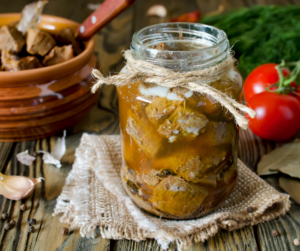Safely Canning Meat, Poultry, and Game
go.ncsu.edu/readext?895567
en Español / em Português
El inglés es el idioma de control de esta página. En la medida en que haya algún conflicto entre la traducción al inglés y la traducción, el inglés prevalece.
Al hacer clic en el enlace de traducción se activa un servicio de traducción gratuito para convertir la página al español. Al igual que con cualquier traducción por Internet, la conversión no es sensible al contexto y puede que no traduzca el texto en su significado original. NC State Extension no garantiza la exactitud del texto traducido. Por favor, tenga en cuenta que algunas aplicaciones y/o servicios pueden no funcionar como se espera cuando se traducen.
Português
Inglês é o idioma de controle desta página. Na medida que haja algum conflito entre o texto original em Inglês e a tradução, o Inglês prevalece.
Ao clicar no link de tradução, um serviço gratuito de tradução será ativado para converter a página para o Português. Como em qualquer tradução pela internet, a conversão não é sensivel ao contexto e pode não ocorrer a tradução para o significado orginal. O serviço de Extensão da Carolina do Norte (NC State Extension) não garante a exatidão do texto traduzido. Por favor, observe que algumas funções ou serviços podem não funcionar como esperado após a tradução.
English
English is the controlling language of this page. To the extent there is any conflict between the English text and the translation, English controls.
Clicking on the translation link activates a free translation service to convert the page to Spanish. As with any Internet translation, the conversion is not context-sensitive and may not translate the text to its original meaning. NC State Extension does not guarantee the accuracy of the translated text. Please note that some applications and/or services may not function as expected when translated.
Collapse ▲For many in our area, it’s meat harvesting time. Whether it’s a wild game like bear or deer, or you come across a great deal on fresh chicken at the local grocery store, meat, poultry, and game are low-acid foods. This means they must be processed using a pressure canner to be considered safely canned.

Low-acid foods are especially prone to develop the harmful bacteria, Clostridium botulinum. This bacteria known to most as botulism thrives in environments with little oxygen, such as in home-canned food. Low-acid foods can cause severe illness – even death, if not properly processed. Here are the tested, safe, instructions for processing meats at home:
Meat Strips, Cubes, or Chunks
Choose high-quality, chilled meat. Remove excess fat. Strong-flavored wild meats should be soaked for 1 hour in a brine made from 1 tablespoon salt per quart of water. Rinse meat. Cut into 1-inch wide strips, cubes, or chunks.
The hot pack method is preferred for the best liquid cover and quality during storage. The natural amount of fat and juices in today’s leaner meat cuts are usually not enough to cover most of the meat in raw packs.
Hot Pack
– Pre-cook meat to the rare stage, by roasting, stewing or browning in a small amount of fat.
– Pack hot meat loosely into hot jars, leaving 1-inch headspace.
– Add 1/2 teaspoon salt to pints; 1 teaspoon to quarts, if desired.
– Fill the jar to 1 inch from the top with boiling meat juices, broth, water, or tomato juice (especially for wild game).
– Remove air bubbles and wipe jar rims.
– Adjust lids and process as directed below.
Raw Pack
– Add 1/2 teaspoon salt to pints; 1 teaspoon to quarts, if desired.
– Pack raw meat in hot jars, leaving 1-inch headspace.
– DO NOT add liquid.
– Wipe jar rims. Adjust lids and process as directed below.
Process in a Dial Gauge Pressure Canner at 11 pounds pressure OR in a Weighted Gauge Pressure Canner at 10 pounds pressure:
Pints = 75 minutes
Quarts = 90 minutes
*remember to make altitude adjustments.
**this information is taken from the book, So Easy to Preserve by Cooperative Extension, UGA.




